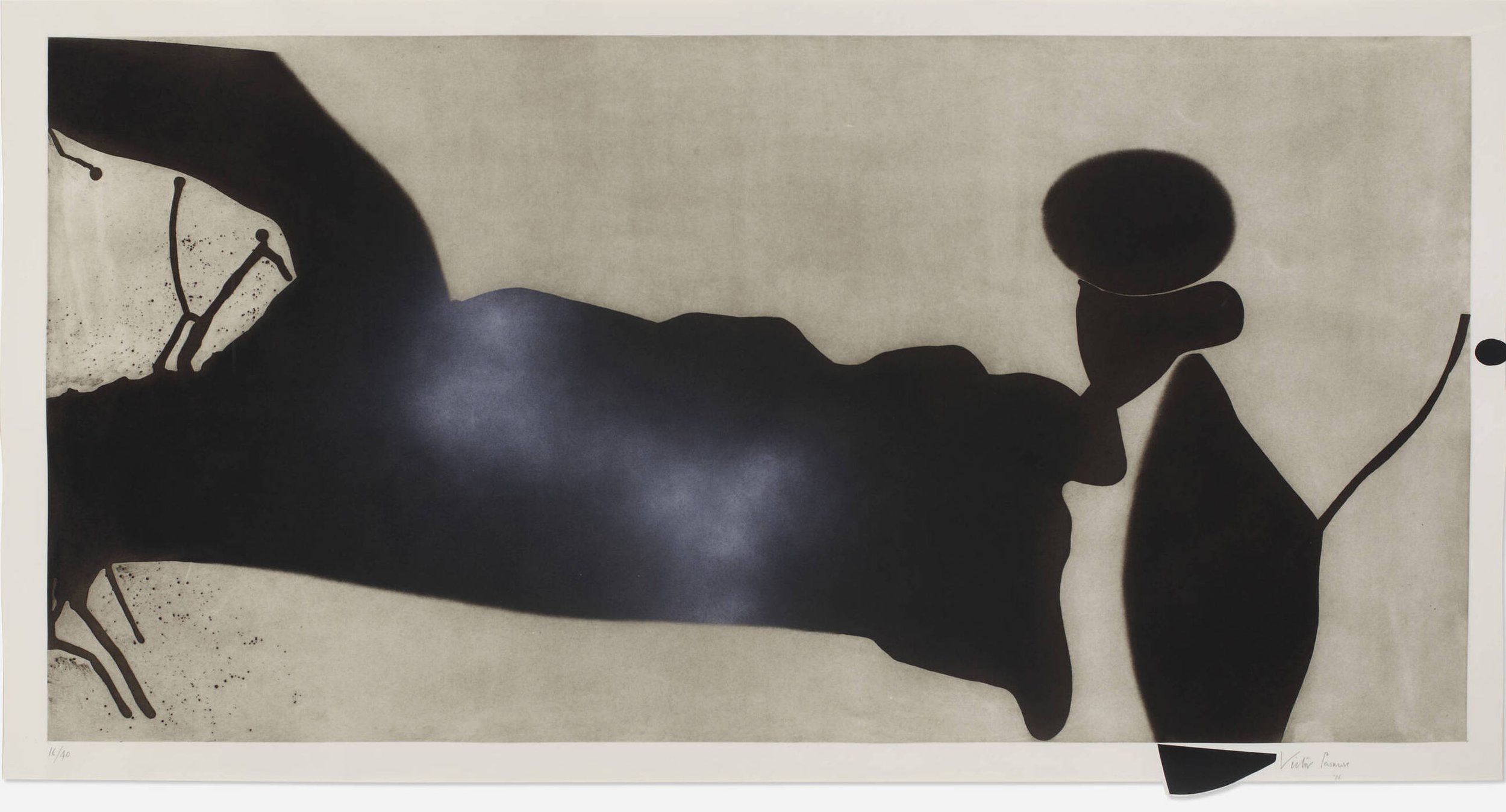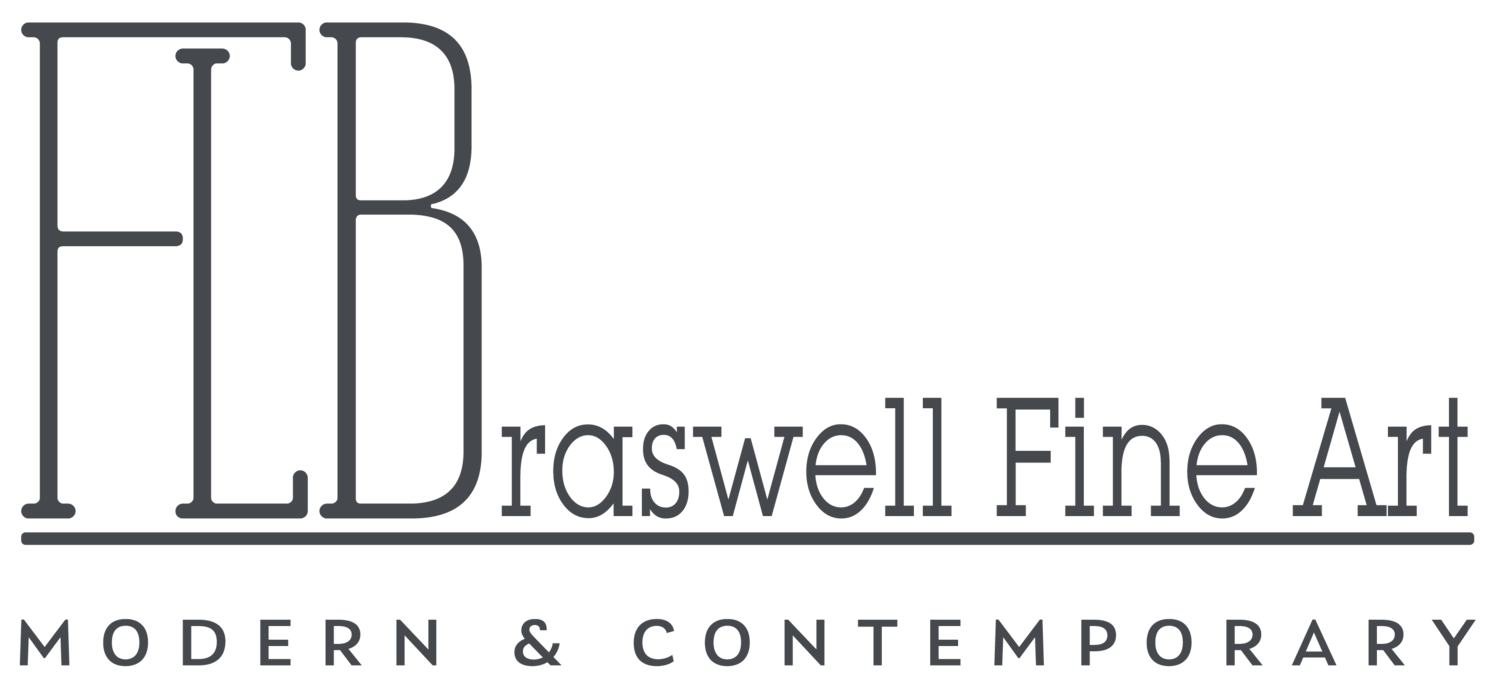Victor Pasmore
Though he began his career making still lifes and landscapes, painter and printmaker Victor Passmore became a pioneer of early British abstraction who went on to represent the country at the Venice Biennale in 1960 and the Bienal de São Paulo in 1965. Initially influenced by Paul Cézanne and Claude Monet, Pasmore first tried his hand at abstract painting in the 1930s —but it wasn’t until 1947 that his work fully shifted toward nonrepresentational imagery. In his earlier abstractions, he employed collaged elements and linear forms; by 1952 his paintings and prints had become geometric, constructivist compositions. Pasmore’s art continued to develop throughout his career, evolving to include soft-edged shapes and meandering lines as well as the blue and green hues and organic forms that characterize his later prints.

Il Mostro
1976
Etching and aquatint
45.5 x 100 inches (sheet)
Publisher, 2RC Edizioni d’Arte, Rome
Printer, 2RC Edizioni d’Arte, Rome
Edition of 40
Signed, numbered and dated in pencil with publisher blindstamp
Provenance, Van Straaten Gallery, Chicago; Private collection, Chicago
ON HOLD
